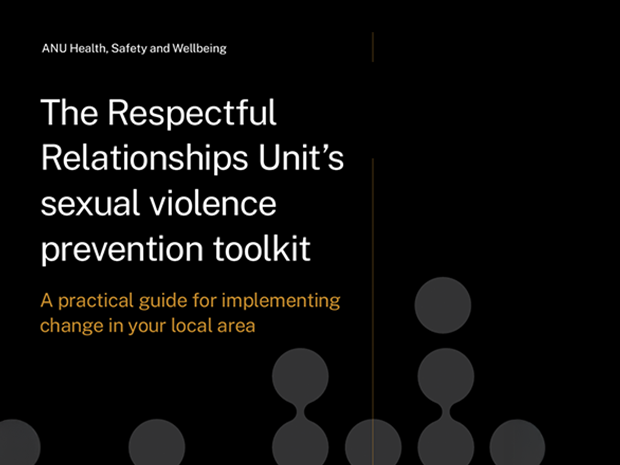“Not Obliged To Deliver”: International Students and Healthcare

By Sarah McCrea
Public, affordable, accessible healthcare is something Australia prides itself on. But who is it affordable for? Young people, particularly university students, have been reportedly found to avoid seeking out medical assistance due to its cost.
Who is it accessible for? Bulk-billing clinics in Canberra are few and far between, so students often need to travel for longer to access care. And, for a lot of international students, healthcare isn’t even public.
Access to healthcare for international students begins with a visa, the type of which is determined by eligibility rules formed by the Department of Home Affairs.
Generally, international students in Australia have a ‘Subclass 500’ Student visa. This visa’s most significant healthcare requirement is that students must secure Overseas Student Health Cover (OSHC). There are exceptions to this for students from Belgium, Norway, and Sweden.
OSHC is a form of private health insurance, which is currently offered by five insurance companies. One of them, Allianz Global Assistance, is ANU’s “preferred provider” for international students.
OSHC has basic coverage options for health insurance, set out by a government deed that insurance companies (which offer OSHC) must abide by. Students with OSHC may also choose to pay more for a more comprehensive plan that increases the scope of what they are insured for.
Although much of the above information is made available on the ANU website, Seungbin Kang, the International Officer of the ANU International Students’ Department (ISD), told the Observer that the details provided were “unsatisfactory.” He stated, “education providers must provide information about welfare and other services, but are not obliged to deliver them.”
It is important to note that Australia’s form of public healthcare, Medicare, primarily covers Australian citizens residing in Australia, permanent residents of Australia residing here, or New Zealand citizens residing in Australia. There are also other Medicare benefits international students may be eligible for.
However, because of eligibility requirements, most international students are unable to access public healthcare in Australia as they can’t access Medicare.
There are exceptions to this lack of access to public healthcare. 11 countries have Reciprocal Health Care Agreements (RHCA) with Australia. This covers medically necessary care for visitors. All of these countries (except Ireland) extend the RHCA to international students studying in Australia.
Under the RHCA, these students have access to the Pharmaceutical Benefits Scheme (PBS), public hospital care, and are eligible for Medicare benefits. For students from Malta and Italy, this only extends for six months. Students who are covered by the RHCA are still expected to maintain “adequate health insurance.” In most cases, this means they must have OSHC.
But most international students aren’t from a country with an RHCA with Australia and don’t have scholarships that cover health insurance. So, for the rest of this article, ‘OSHC’ just means the basic OSHC plan and ‘international students’ will refer to students who don’t have an RHCA and aren’t eligible for Medicare.
Now, what do costs and coverage look like for these students?
The PBS is also not included in the OSHC. As outlined in a guide about OSHC by the Department of Health, the OSHC will, however, still pay up to $50 of the cost of a single pharmaceutical item. This scheme has a maximum of $500 a year, and the item has to be “prescribed and dispensed by a registered practitioner recognised by the health fund.” Over-the-counter medications have to be paid out of pocket.
The ANU Medical Centre has different regulations for domestic and international students. ANU’s Medical Centre only offers bulk-billing to domestic ANU students with a Medicare card, but with the majority of OSHC providers, the appointment is covered by that insurance.
Kang commented that “there currently is a month-long wait list” at the ANU Medical Centre. He added due to the availability and accessibility of both this service and others, international students “pay $3,000 (for a 4-year-long program) for health coverage, only to foot their own bill when visiting a private GP.“
With private hospitals, it depends on whether there’s a contract between the insurer and the hospital. Generally, in these contracts, all medical costs will be covered, but it’s important to check with providers which private hospitals they have contracts with.
If an international student is admitted to the hospital after visiting the Emergency Department (ED), fees are covered by OSHC. However, ED fees are required to be paid out of pocket if the student is not admitted to the hospital.
Here it gets a bit more complicated. The deed for provision of OSHC outlines that a basic plan has to cover the costs of “100 per cent of the fee as listed on the Medicare Benefits Schedule” (MBS) for GP visits. But this does not mean that 100% of the total fee is covered by the insurance.
The fee covered by this private insurance is the same as the fee covered by those with public healthcare (Medicare). But this fee is only a “schedule fee” paid to medical practitioners by the government.
A schedule fee is determined by what the government believes is “reasonable on average for that service.” Medical practitioners can charge more than this, meaning patients have to pay the outstanding cost themselves.
Also outlined in the deed, for medical services from a specialist and other out-of-hospital medical services, OSHC pays “85 per cent of the fee as listed on the Medicare Benefits Schedule.” In this instance, international students would have to pay the remaining 15% of the schedule fee, plus whatever extra is charged by the practitioner.
Even though the Medicare Benefits Schedule is mentioned often in requirements of insurance cover for OSHC, it’s important to note that students with OSHC still aren’t covered by the Medicare Benefits Schedule. It’s only mentioned to show a rate of comparison between what OSHC covers and what public healthcare covers.
A key distinction between OSHC plans and Medicare is eligibility for bulk-billing. Bulk-billing is where the full price of a medical service is covered by Medicare, with no out-of-pocket cost to the patient. It is generally used by general practitioners (GPs).
Health professionals can choose who to bulk-bill, and even if they want to bulk-bill at all. Often, bulk-billing is only offered to those with concession or health cards, although this may change with a new bulk-billing system for GPs to be introduced at the end of this year.
However, bulk-billing is still restricted to Medicare-eligible patients. Some clinics can provide free healthcare to all, but this is not the same as bulk-billing.
Kang addressed this as well, stating, “In the Canberra bulk billing GP crisis, [there] are international students who have even less access to these services than their domestic peers. A world where quality healthcare for international and domestic students is possible.”
There are several walk-in-centres across Canberra, which are free of charge regardless of whether a patient has access to Medicare.
The closest clinic to ANU is in Dickson, followed by the Belconnen clinic. These are for “non-life-threatening injuries and illnesses.” In an emergency, please ring triple-zero.
When discussing issues international students face when accessing healthcare, Kang stated, “for many international students already in precarious financial situations, it is [about] being stuck in between important living costs or seeking medical treatment.” Language barriers were also raised, with the idea that often healthcare professionals cannot “fully accommodate” this.
International Students Officer Seungbin Kang directs students towards the resource linked here, which the International Students Department and Disabilities Students’ Association have produced. The resource outlines information on Canberra GPs, including price, whether they bulk-bill, access for students with disabilities, and other information.
If you have further questions about this topic, some useful points of reference are details on Medicare eligibility, the deed for provision of OSHC in Australia (which outlines minimum coverage for costs), and the contact list of OSHC Insurance.
Graphics by Shé Chani
Know something we don’t know? Email [email protected] or use our anonymous tip submission.
If you have an issue with this article, or a correction to make, you can contact us at [email protected], submit a formal dispute, or angry react the Facebook post.
Want to get involved? You can write articles, photograph, livestream or do web support. We’re also looking for someone to yell “extra!” outside Davey Lodge at 1AM. Apply today!








